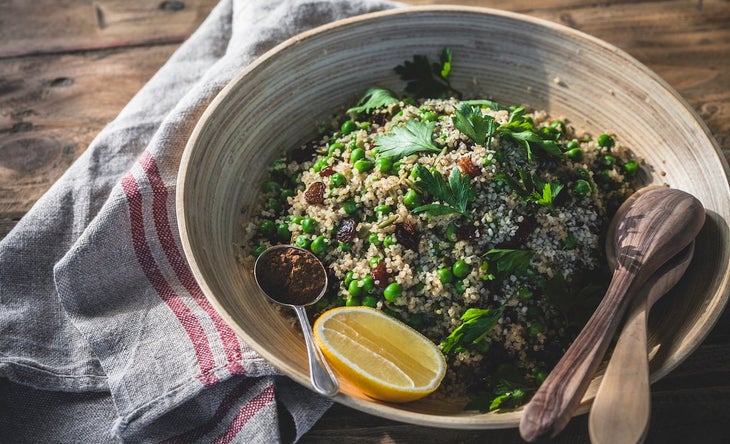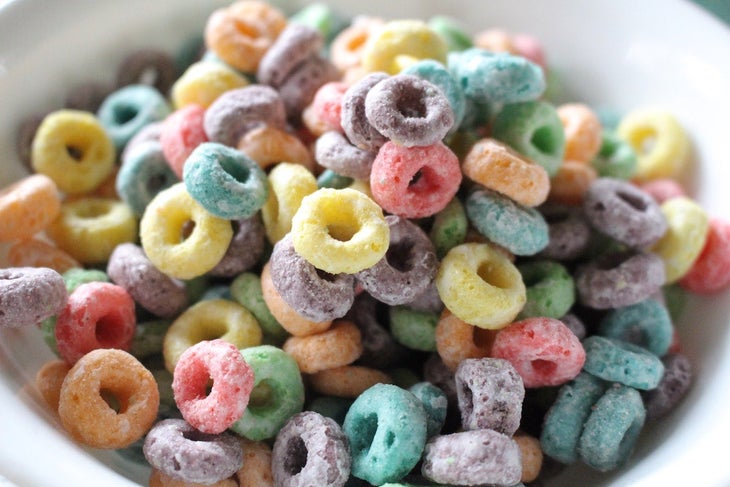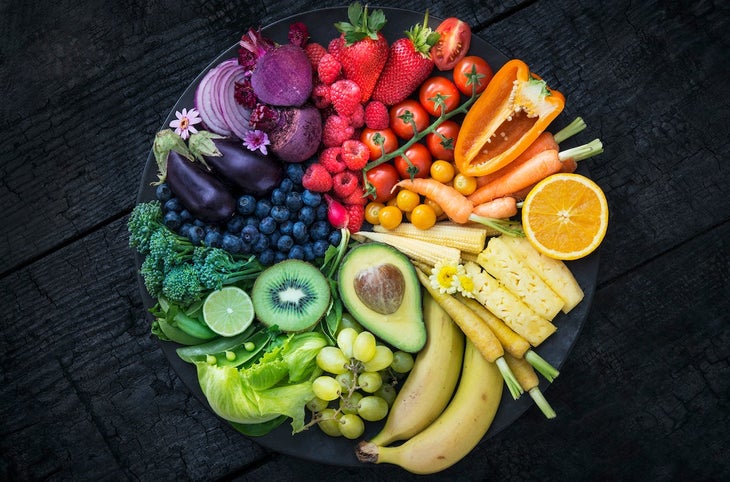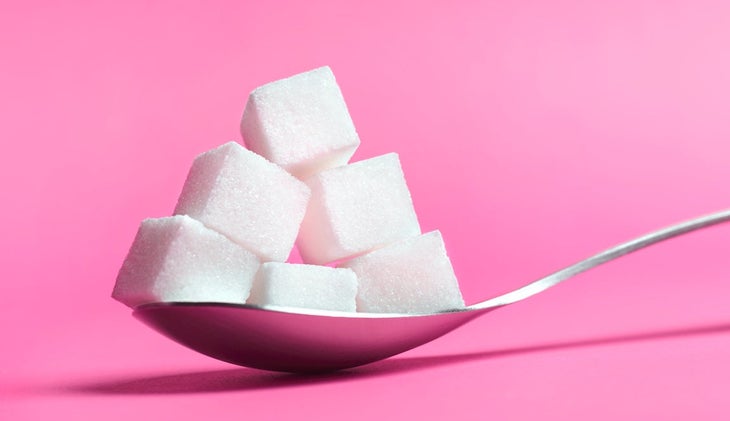The 5 Universal Principles of Good Nutrition, According to Everyone
Yes, nutrition advice is often confusing, ambiguous, and hotly debated. But despite all the noise out there, these nuggets are indisputable—and often transformative.
Get full access to Outside Learn, our online education hub featuring in-depth nutrition, fitness and adventure courses, and more than 2,000 instructional videos when you sign up for Outside+..
A tremendous amount of eating advice is constantly swirling around on social media, fitness circles, and perhaps your dinner table. So much so that it can seem overwhelming to figure out what you should eat and what you should put aside. After all, a new diet touting impressive health, performance, and physique benefits seems to pop up weekly. Carnivore, plant-based, keto, fasting, kale-only, each one seemingly boasting a different nutrition philosophy. No meat or more meat? No carbs or more carbs? No nightshade veggies or more of them? It’s all rather challenging to keep things straight.
While we can’t help you sort through all the advice circulating out there, sniffing out each piece of nutrition B.S., we can guide you to a handful of nutrition guidelines that are nearly universally accepted and backed up by scientific research.
So, what nutrition concepts can you really be confident in? Here are five eating principles that nearly everyone agrees on for better health and fitness gains.
1. Get More Fiber

With all the hoopla surrounding protein, you’d think that it is the food item most people are coming up short in. That is not the case. A new study out of Texas Woman’s University using dietary data of more than 14,600 people found that only 7.4% of American adults are meeting the Institute of Medicine’s suggested daily fiber consumption, which is 14 grams of fiber per 1,000 calories consumed. That is a huge shortfall that is likely having serious health impacts.
It’s becoming clearer with each passing year that a major reason why higher fiber diets are so important is that this is the stuff that bacteria in our guts nourish themselves on, and in doing so, increase levels of beneficial micro-critters. And a robust microbiome is being linked to everything from improved digestive health to better immunity to even elevated mental functioning, all things that hard-charging athletes should be concerned about. No wonder research suggests boosting fiber intake can lower the risk of premature death from conditions like heart disease.
If an athlete requires about 3,000 calories a day to meet training needs, then with that should come with about 40 grams of dietary fiber. Remember that sports drinks and sugary gels are not going to help you nail this mark.
Plan of Attack: You’ll find fiber in an assortment of plant-based foods including beans, lentils, vegetables, whole grains (not so much in white bread and muffins), fruit, nuts, and seeds. So aim to include at least one of these food groups in each of your meals and snacks. To make a high fiber diet easier on your stomach, try to spread your intake throughout the day.
2. Limit the Extra Processed Stuff

Regardless of the style of diet you might be following, you’ve likely been told to ditch processed foods. But processed foods, in general, are not the issue when it comes to healthy eating; a bag of frozen broccoli florets, canned tomatoes, and a tub of plain yogurt can all be considered “processed.” It’s what is now being called ultra-processed foods that are the real concern.
Ultra-processed foods (UPFs) undergo a certain degree of processing like frying and are combined with one or more ingredients such as high-fructose corn syrup, fats like palm oil, emulsifiers, food coloring, and artificial flavors and sweeteners that are all used to alter taste, texture, and shelf life. In the end, the food is often unrecognizable from its original form. Corn flakes are a long way off from corn on the cob and butter pecan ice cream is quite different than what squirts out of udders.
As food processing increases, nutrient density decreases. About 70% of the packaged food in America can be considered ultra-processed, so a trip to any supermarket can be a hazard. Recent research has linked eating too many UPFs with unhealthy weight gain, concerning cholesterol numbers, and heart disease. And sweaty athletes should take notice of this Journal of the Academy of Nutrition and Dietetics study that suggests that the more highly processed foods you eat—such as cookies, chips, and popcorn shrimp—the more likely you are to be dehydrated, since these foods tend to have very low water content.
UPFs come in both plant-based and animal-based form. In fact, this investigation found that people such as vegans, who avoid products from animals including meat and dairy, may end up obtaining more of their daily calories from UPFs. This makes sense if someone is relying on deeply processed meat alternatives, sugary non-dairy milks, and packaged snack foods targeted toward the plant-based crowd. There is certainly more than one way to eat lousy.
Plan of Attack: Go back to basics and eat more wholesome foods like chicken instead of chicken nuggets, beans instead of bean chips, brown rice instead of rice puff cereal, and blueberries instead of blueberry muffins. This will give you a bigger dose of the nutrition you need for good health and to support training. Diligent label reading can help you choose products with fewer ingredients with tongue-twisting names. Cooking at home from scratch also goes a long way toward reducing the amount of UPFs that sneak into your diet.
3. Eat the Rainbow

No, we don’t mean Lucky Charms or Skittles. It’s almost indisputable that it is in your best interest to fill your grocery cart with an assortment of colorful vegetables and fruits as a pathway to better health and fitness gains. Many of the pigments that the stars of the produce aisle and farmers market glean their dynamic shades from are considered powerful antioxidants which can help keep our bodies operating smoothly. Antioxidants are a class of compounds that hunt down and mop up free radicals, thereby preventing them from damaging our cells and spurring on inflammation.
The end result of a diet rich in antioxidants like flavonoids and polyphenols from colorful fruits and vegetables is likely a lower risk for maladies including cardiovascular disease, cognitive decline, and certain cancers. Perhaps, also, even better recovery from hard-charging workouts. Different colors of fruits and vegetables offer up different antioxidants with varied functions. For instance, orange carrots and sweet potatoes are laced with the antioxidant beta-carotene, whereas blueberries supply a hefty dose of anthocyanin compounds. We would be remiss not to mention that these nutritional MVPs are also helpful in making sure you nail your daily fiber quota.
And the more diversity of cheery colors you consume the better. A watershed study from Colorado State University found that women who ate a greater botanical diversity of fruits and vegetables, and in turn a greater range of antioxidants, experienced lower levels of DNA oxidation, an indication of free radical damage and accelerated aging, than those who ate a lower variety of items from the plant kingdom and, therefore, a reduced diversity of phytochemicals.
Plan of Attack: Each time you go grocery shopping make sure to bring home at least five different colored veggies and fruits, then look for ways to add a splash of different hues to your meals and snacks. Stuff a lunch sandwich with spinach and sliced red bell pepper, top oatmeal with rosy raspberries, or roast sweet potato for a dinner side.
4. Limit Added Sugars

Whether low-carb or high-carb, most would agree that the outrageously high amounts of added sugar in the modern American diet is bad news. And, no, you can’t outrun all the pitfalls that come with spoiling a sweet tooth rotten. Too much added sugar—stuff like high-fructose corn syrup and cane sugar pumped into everything from yogurt to whole wheat bread to energy bars—has now been linked to dampened immunity, heart disease, depression, and, to nobody’s surprise, diabetes.
No wonder that greater intake of the sweet stuff appears to shorten lifespan. What’s more, sugar provides empty calories, as it supplies calories but virtually no essential nutrients. This makes it harder to maintain healthy body composition and also get all the nutrients you need daily.
According to the Dietary Guidelines for Americans, people 2 years and older should keep their intake of added sugars to less than 10% of their total daily calories. A lot of people are eating nearly double this amount, and may not even realize it since caloric sweeteners have a way of sneaking their way into a huge range of food on store shelves. And, yes, even so-called “natural sugars” like honey and maple syrup count as added sugar.
Plan of Attack: Carefully read food labels looking for sneaky sugar add-ins. You can often find a zero-sugar alternative of a tomato sauce, yogurt or cereal. Go easy on desserts and sweet snacks like ice cream and pastries. Other than sports drinks consumed during and perhaps immediately after a workout, aim to sip beverages like coffee, tea and milk that are not sweetened.
Related: Break the Sugar Habit
5. Eat Enough

Though we often read that we should be eating less to help battle the obesity crisis in America, few would argue that if you are torching a huge amount of calories from training you need to eat enough calories to support these energy needs. Come up short over the course of a day, and day after day, and you can expect some health and performance consequences.
A mismatch between calorie consumption and calorie expenditure, in now what is being called “relative energy deficiency in sport,” or RED-S, has been associated with weakened bones, low estrogen and menstrual disturbances in female athletes, low testosterone in male athletes, higher levels of stress hormones, impaired immunity, and altered resting metabolism.
Due to the higher rates rate of energy expenditure, endurance athletes such as runners are at greater risk for suffering from low energy availability and associated health complications. Despite the health and performance consequences associated with RED-S, awareness remains low.
Plan of Attack: If you’re frequently low on energy, can’t overcome any fitness plateaus, or suffering mood disturbances, it’s worth considering if you are under-fueling. Those who are consistently taking part in long, hard training sessions and races should make it a goal to spend more time in the kitchen preparing extra calories. An extra helping of spaghetti may do the body good. If you’re struggling to meet your nutrition needs in response to training demands, consider seeking professional advice from a sports dietitian to help develop a personalized plan.
From PodiumRunner